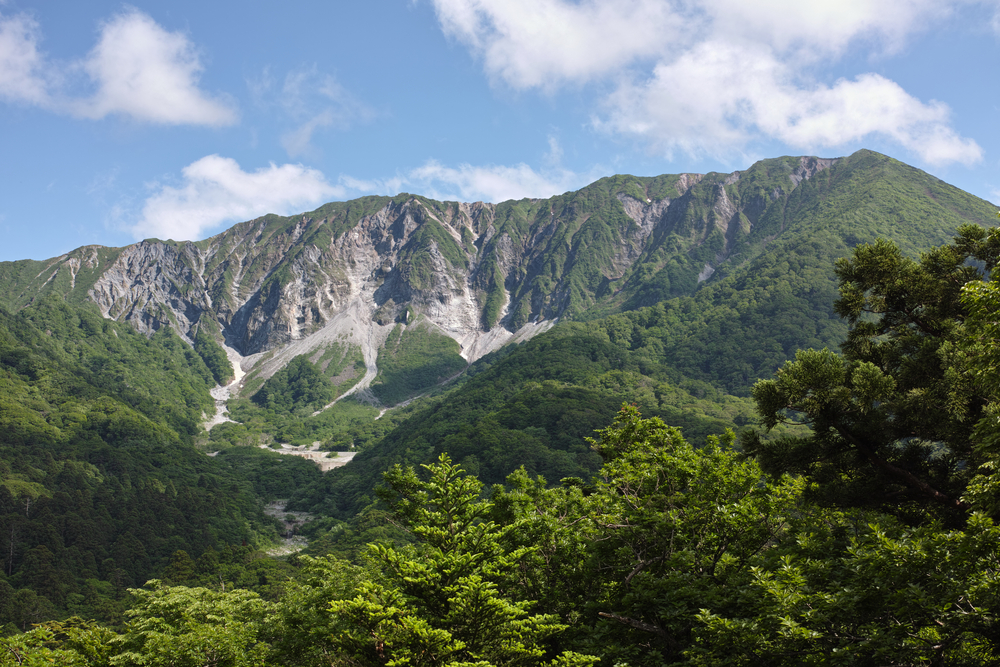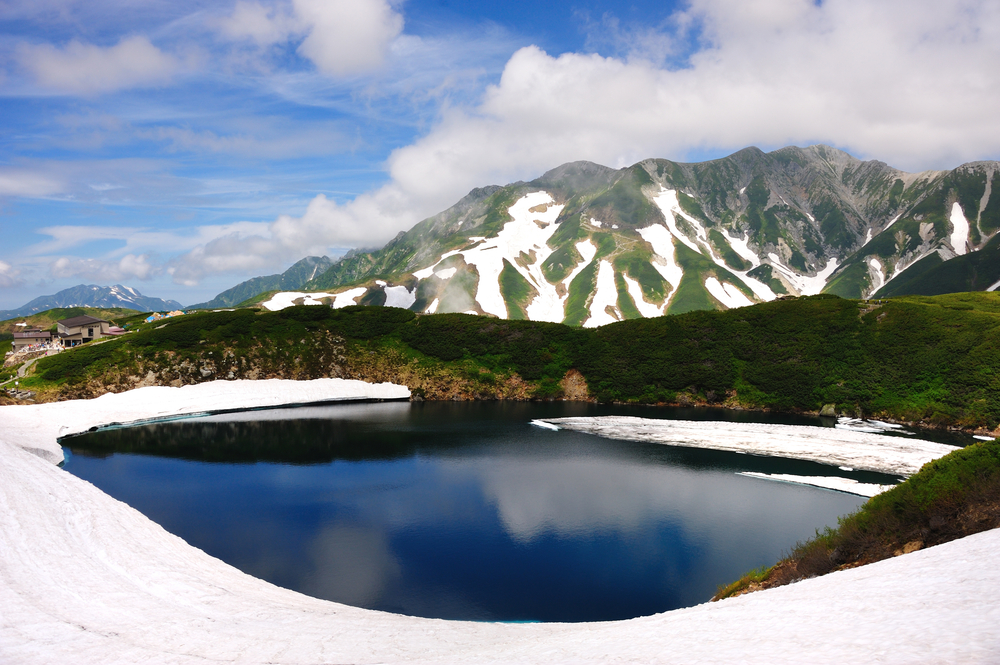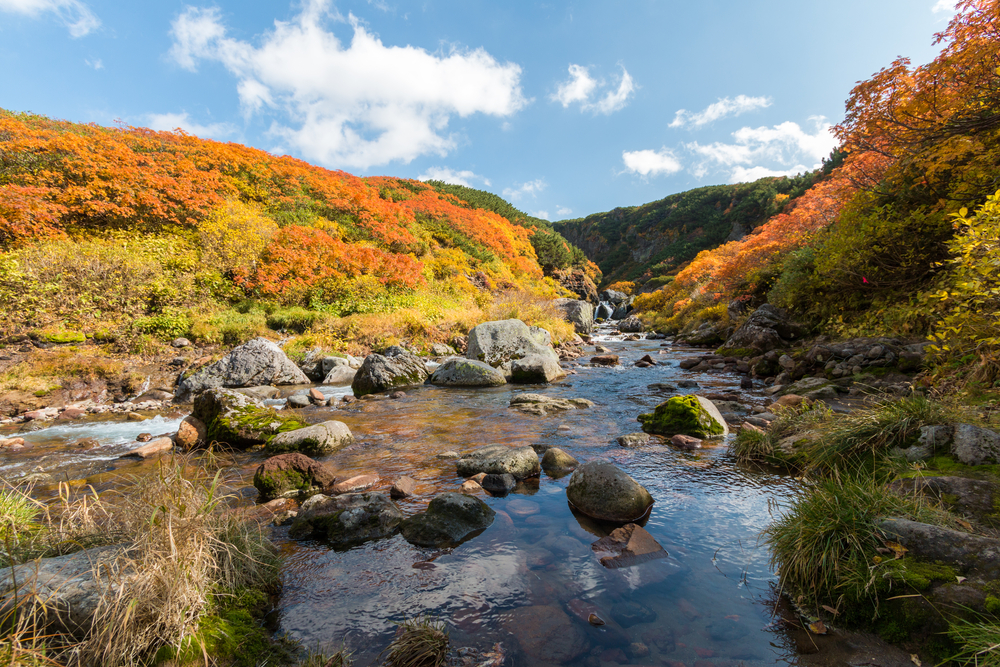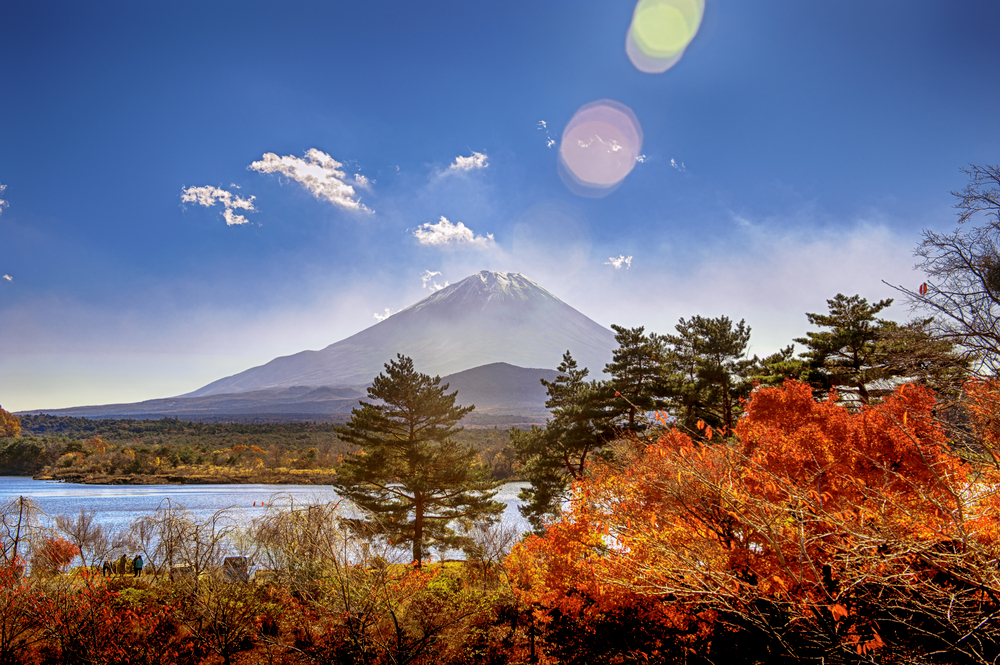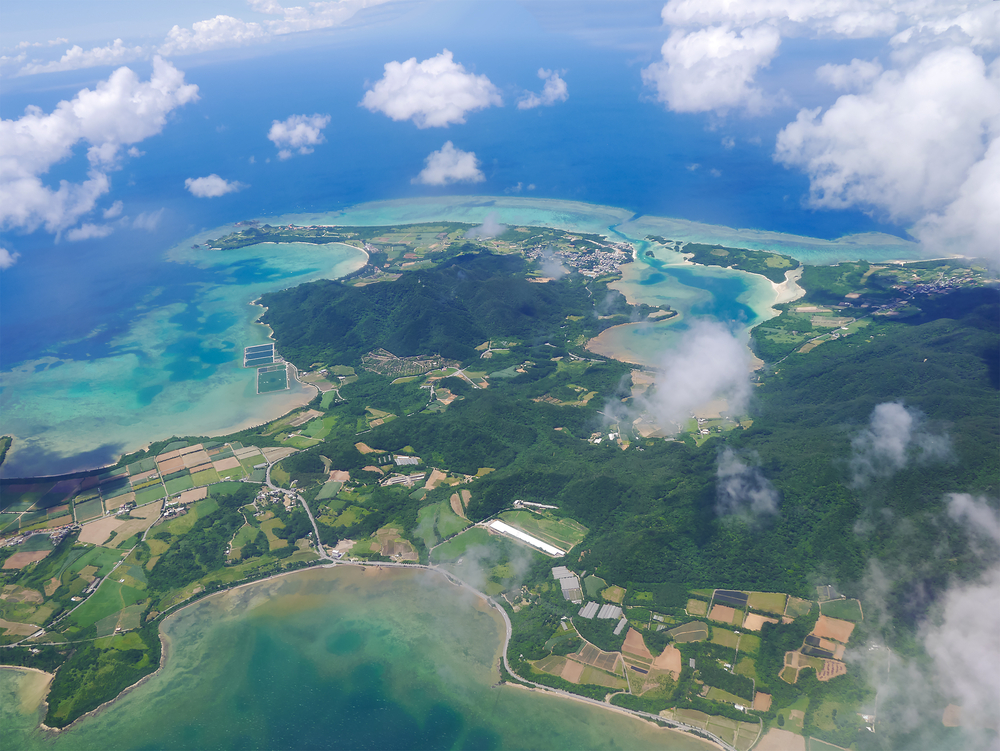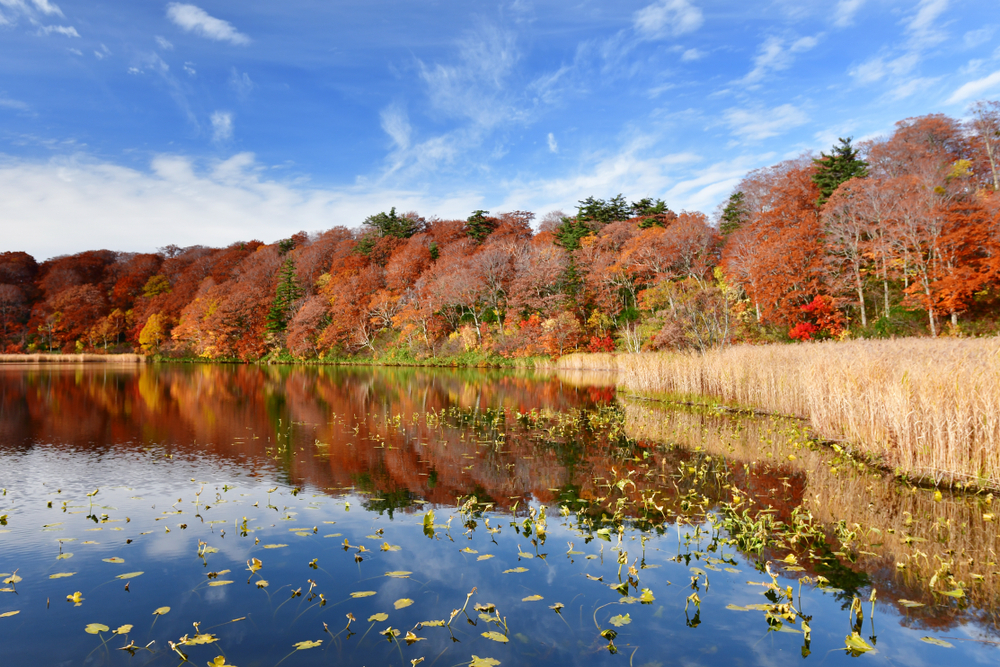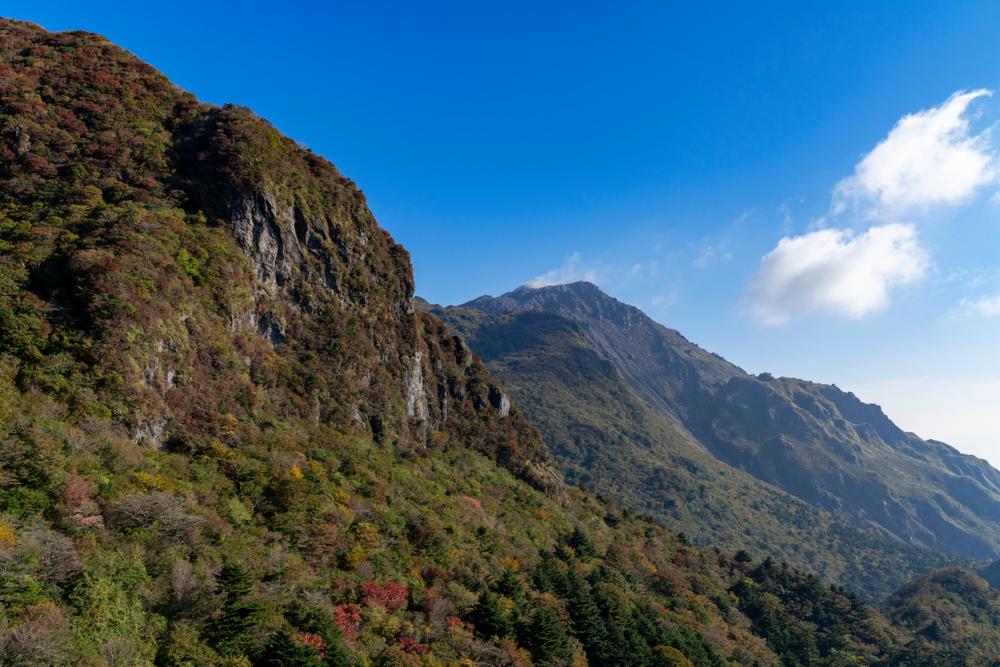Daisen-Oki Overview
Daisen-Oki National Park, located in the western part of Japan’s Honshu Island, spans a total area of 131.12 square miles (339.61 square kilometers). Known locally as Daisen-Oki Kokuritsu Kōen (大山隠岐国立公園), this park is celebrated for its diverse geography, which includes majestic mountains, lush forests, and striking coastal landscapes. The park encompasses the volcanic Mount Daisen, standing at 5,673 feet (1,729 meters), making it the highest peak in the Chūgoku region. The Oki Islands, part of this park, lie in the Sea of Japan and are noted for their dramatic cliffs, basalt rock formations, and rich cultural heritage. These features combine to create a stunning blend of terrestrial and marine ecosystems.
The terrain within the park varies greatly, from the dense beech and cedar forests blanketing Mount Daisen to the coastal cliffs and beaches of the Oki Islands. In spring and summer, the area bursts with lush greenery and wildflowers, while autumn brings a vibrant display of red and gold foliage. The park is also home to key natural landmarks like the Kagikake Pass, offering panoramic views, and the Shiraga Waterfall, cascading dramatically through the forested hills.
Daisen-Oki National Park is a haven for wildlife enthusiasts. Among its most prominent mammals are the Japanese serow, a goat-antelope species, and the sika deer, which roam freely across the mountainous and forested areas. Birdwatchers can encounter species like the black kite and the rare Japanese murrelet, especially along the coastal regions of the Oki Islands. The park’s marine environment further supports an array of fish and invertebrates, making it an important area for both terrestrial and aquatic biodiversity.
Popular highlights for visitors include trekking to the summit of Mount Daisen, which offers breathtaking views of the surrounding landscapes, and exploring the historic Oki Islands, rich in folklore and traditions. Other activities include visiting the Mitokusan Sanbutsu-ji Temple, a stunning mountaintop shrine, and soaking in the rejuvenating hot springs of Misasa Onsen, known for their healing properties. The coastline of the Oki Islands also attracts kayakers and divers eager to explore the underwater beauty of this protected area.
The park is well-managed to support sustainable tourism and conservation. Efforts to maintain the balance between human activity and natural preservation have seen success, with strict guidelines for hiking and camping to minimize environmental impact. However, challenges persist, such as the effects of climate change, invasive species, and the need to preserve the cultural heritage of the Oki Islands. Through the collaborative efforts of local communities and the Japanese government, Daisen-Oki National Park continues to thrive as a model of harmony between nature and culture.








































































